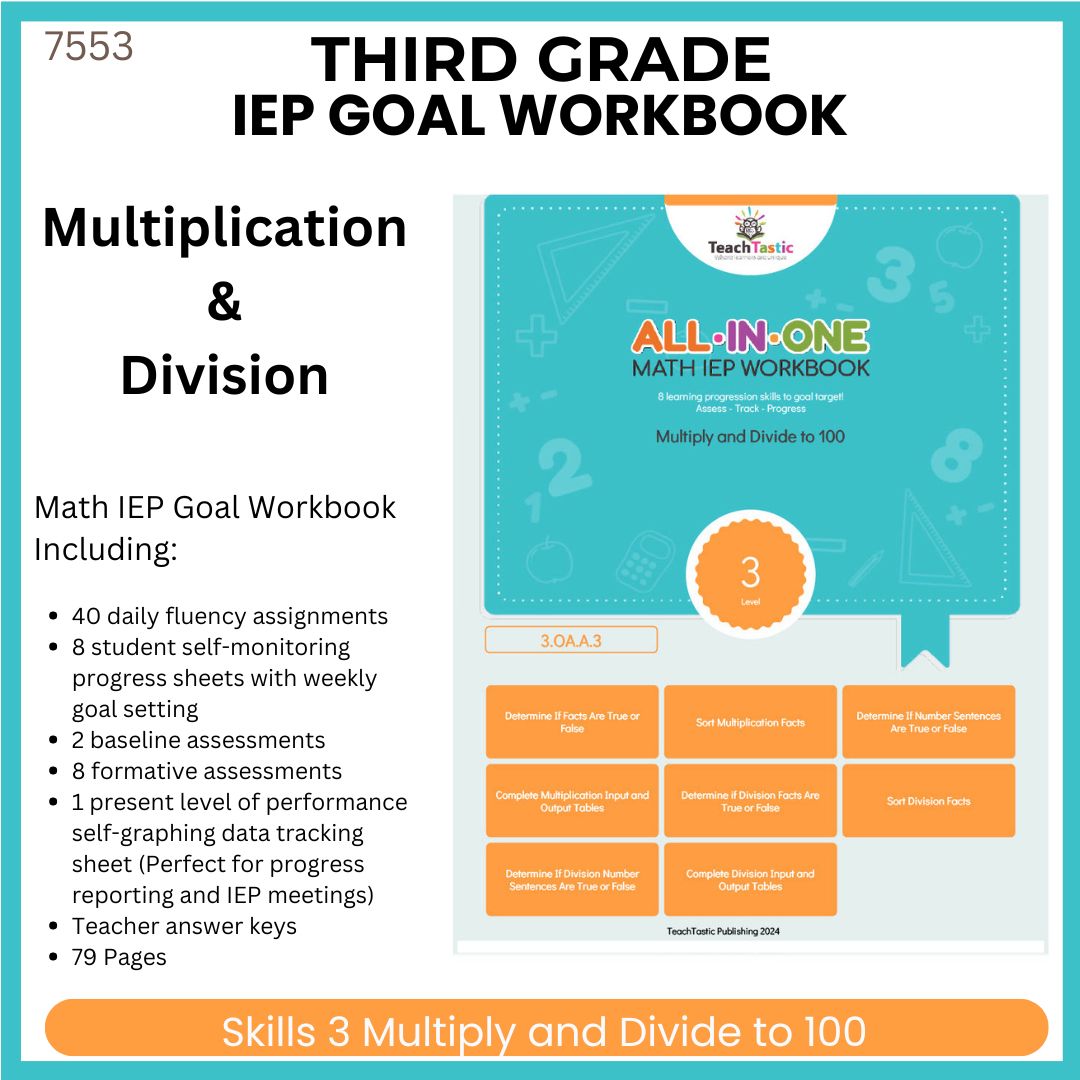Lesson Plan Template
-
Grade
-
Subject
-
Section
Third
Math
-
Competency
Multiplication fluency up to 10
-
Aligned Standards
Operations and Algebraic Thinking
-
Strand
3.OA.A.3
-
Vocabulary
Number Sentence: A mathematical statement that shows the relationship between numbers using operations like addition, subtraction, multiplication, or division, often including an equality sign.
True: A statement that is correct; both sides of the equation are equal.
False: A statement that is incorrect; both sides of the equation are not equal.
Equality: The state of being equal, especially in terms of value or quantity.
Sentence Solutions
Determine If Number Sentences Are True or False
Prerequisite Skill
Materials and Preparation
- Whiteboard and markers
- TeachTastic Worksheet Pack for Determining True or False Number Sentences
- Multiplication tables or charts
- Number sentence cards for group activities
Learning Objectives
- Students will perform multiplication operations on both sides of a number sentence.
- Students will compare the results to determine if a number sentence is true or false.
- Students will explain their reasoning for determining whether a number sentence is true or false.
Introduction
Begin the lesson by explaining that a number sentence is like a statement in math that can be either true or false. Ask students if they can think of examples from their daily lives where they need to decide if something is true or false. Transition into the concept of checking the truth of a number sentence by using multiplication. Write a simple example on the board, such as 3×4=12, and discuss whether it is true or false.
Explicit Instruction/Teacher modeling
Present the number sentence 8×3=4×6 on the board. Demonstrate step-by-step how to solve the multiplication on both sides of the equation. Write out 8×3=24 and 4×6=24. Since both sides are equal, the number sentence is true. Next, show an example of a false number sentence, such as 7×2=5×3, and solve it to show that 14 does not equal 15. Explain that because the two sides are not equal, the number sentence is false.
Guided Practice
Distribute the TeachTastic Worksheet Pack for Determining True or False Number Sentences. Work through several problems as a class, asking students to solve the multiplication on both sides and then compare the results. Encourage students to discuss why a number sentence is true or false. Use number sentence cards in small groups, where students can collaborate to sort the sentences into "True" or "False" piles.
Independent Practice
Allow students to complete the remaining problems in the TeachTastic Worksheet Pack independently. They should solve the multiplication problems on both sides of each number sentence and determine if they are true or false. Circulate the room to provide guidance and check for understanding.
Differentiation
Support
- Provide additional practice with manipulatives for students who need visual support in understanding multiplication.
- Offer step-by-step written guides for solving number sentences.
- Pair struggling students with a peer tutor for extra help in understanding the concept of equality.
Extension
- Challenge students to create their own number sentences and swap them with a partner to solve.
- Introduce more complex number sentences that involve additional operations such as addition or subtraction along with multiplication.
- Explore the concept of using division to check the truth of a multiplication number sentence.
Assessment
Use the completed worksheets and exit tickets from the TeachTastic Worksheet Pack to assess students’ understanding. Check for accuracy in solving the multiplication problems and in their reasoning for determining the truth of the number sentences.
Review and closing
Summarize the key points of the lesson by revisiting the concept of a number sentence and the criteria for determining if it is true or false. Address any misconceptions and clarify any questions. Conclude by reminding students of the importance of checking both sides of an equation in mathematics.
Misconceptions
- Misconception: Students may think that two numbers multiplied always result in a true number sentence. Correction: Emphasize the importance of performing the multiplication on both sides and comparing the results.
- Misconception: Students might confuse the multiplication sign with the equality sign. Correction: Reinforce the difference between these symbols and their roles in a number sentence.
- Misconception: Students might assume that a number sentence is false if they do not immediately recognize the multiplication fact. Correction: Encourage them to always calculate both sides before deciding if the sentence is true or false.




